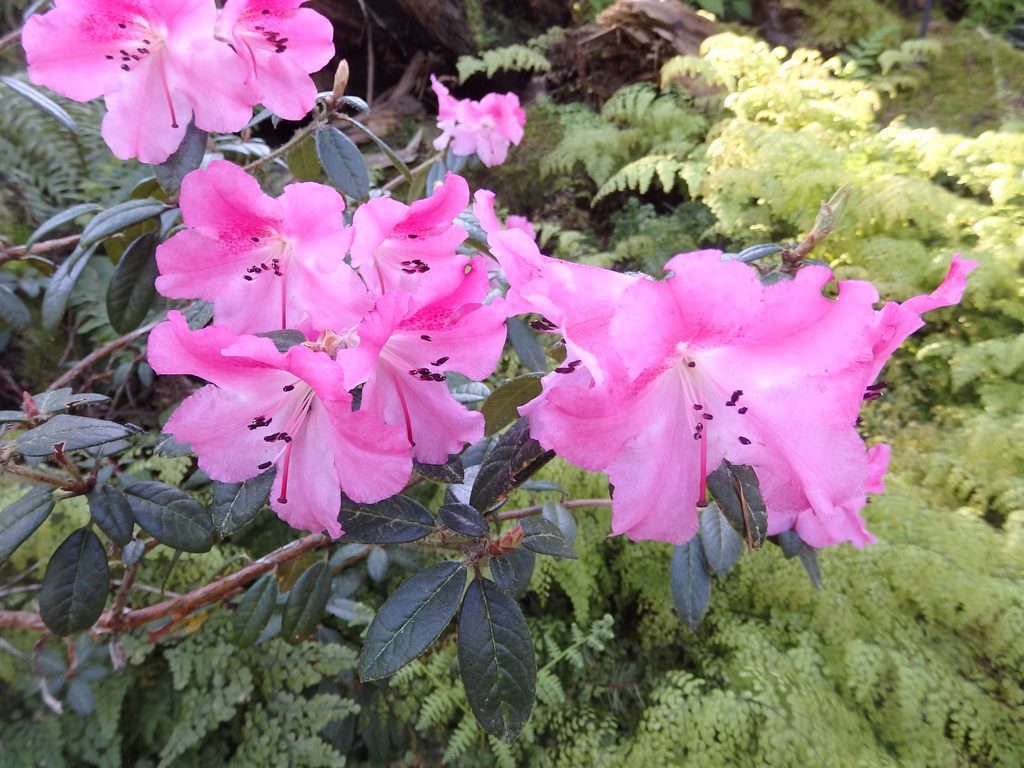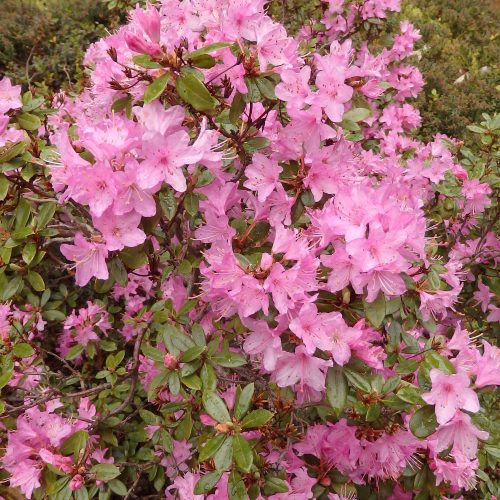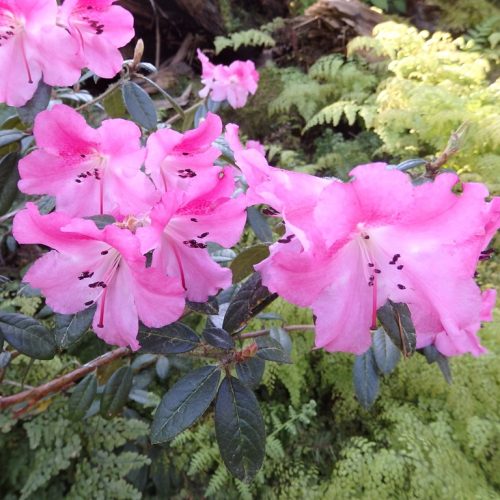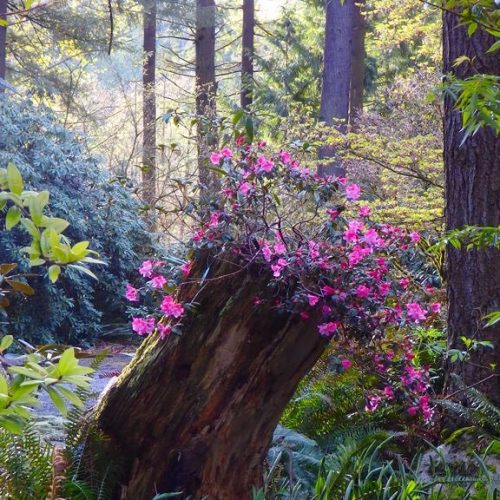by Atsuko Gibson
- R. ‘Pintail’
Over the years, I seem to get an increasing number of inquiries for small growing rhododendrons. When I get these questions, I have certain rhododendrons in mind to recommend, depending on the availability in our nursery. R. keiskei ‘Yaku Fairy’ and many of the alpine rhododendrons are my usual recommendation, but for rhododendron beginners, the Glendoick Bird Series might be just the thing to look for.
Glendoick is a world famous rhododendron nursery in Scotland. Father and son team Peter and Ken Cox are known as rhododendron gurus. They have created what are called the “Bird Series” dwarf rhododendron hybrids over the decades. Glendoick has released 25 hybrids named after birds thus far, and every one of them is worth having space for in your garden. I would like to introduce some of my favorites.
‘Pintail’ is an early bloomer (late March in the PNW) with clear pink flowers. Its absolutely charming flowers pair well with emerging spring ephemerals, such as trilliums and erythroniums. Pintail’s early bloom is derived from R. pemakoense in its parentage and the clear pink flowers of R. davidsonianum. It can take hot afternoon sun, which is a result of the R. racemosum in its parentage.
If you are a yellow flower collector, ‘Wren’ might be an excellent choice. This is an F1 hybrid, which means it is a cross of two species (R. ludlowii x R. keiskei ‘Yaku Fairy’). Its flowers are a rich yellow color and are borne against glossy foliage. It is a particularly small grower (only reaching 10 inches wide in 10 years), so if you have a rock garden, it will fit beautifully in between the rocks.
I have to give a great deal of credit to ‘Crane’. There are not very many pure white dwarf rhododendrons that come to mind. This is another F1 hybrid (R. keiskei ‘Yaku Fairy’ x R. racemosum ‘White Lace’). It pairs well with just about anything you plant next to it. We grow this plant in full sun at the RSBG, again thanks to having R. racemosum as one of its parents. It eventually forms a low mound, which gives it a tidy appearance.
Are you are fragrant flower lover? Then ‘Plover’ (R. edgeworthii x R. dendrocharis) is what you need. As I write this, this plant is in full glorious bloom in my personal garden. It has deep pink flowers with charming fragrance thanks to R. edgeworthii as a parent species. At the RSBG, we grow ‘Plover’ in a stump across from the stumpery. Both of the parent species are epiphytes in the wild, so this way of cultivation works very well. It is so popular in our nursery that I can’t keep up with the demand!
I can keep going, but I’ll stop after introducing one more: ‘Waxbill’ (R. keiskei ‘Yaku Fairy’ x R. spinuliferum). Its pink flowers have a very distinctive tubular shape, and on top of that, it has bronze-colored new growth. This plant can be seen growing just outside the Rutherford Conservatory at the RSBG. This 15 year old specimen is about 3 feet tall, growing in full sun.
I am certain that you will find your favorite amongst the “Bird Series”, perhaps more than one. Hey, they are all dwarfs, so why not find a spot for one more in your garden.




